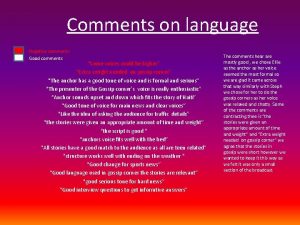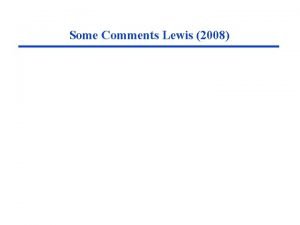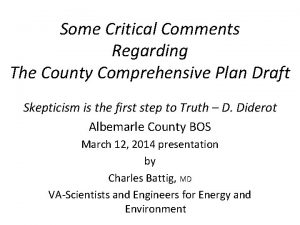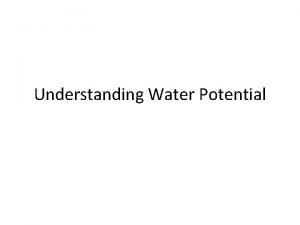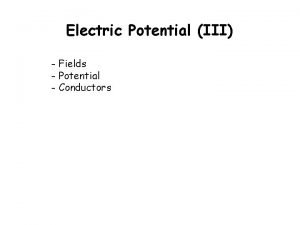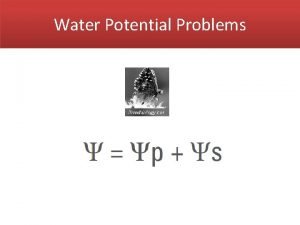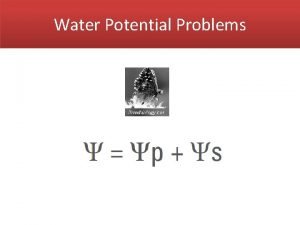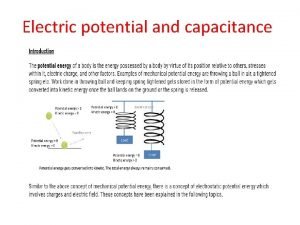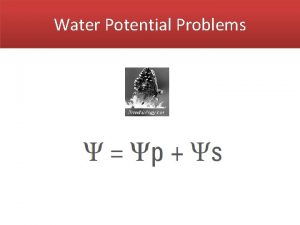Some Comments Regarding Performance Potential for a New




























- Slides: 28

Some Comments Regarding Performance Potential for a New Machine Gun and Ammunition Concepts Abe Flatau Consultant

General Outline • • Summary Introduction Brief Technical Overview Ammunition – Emphasis on lightweight, high V 0, very low drag projectiles = high kinetic energy to deposit on target • Brief Comparison of Trajectory Profiles – Proposed vs. current

Conclusion • It is strongly recommended that the key technologies be brought together to result in a modern, high performance, effective machine gun system that is a superior weapon in the field.

Summary • Conceiving, developing and fielding a weapon system is not an easy task. • Perhaps that is why we shy away from replacing tried and tested systems that have been used for almost the past century. • This brief presentation points out some of the advances in technology that can be applied to a new high performance machine gun system.

Comments on. 50 Cal Heavy Machine Gun • • Technology from the end of WWI (1918). • Saboted Light Anti-Material Penetrator (SLAP) performance limited. • Overall gun-ammo system limited for performance upgrade. Cartridge volume is limited. No significant increase in performance.

Aerodynamicist’s Golden Rule “Assume Everything, But the Responsibility. ”

Current and Proposed Heavy Machine Gun Systems Wt (lb) • • • US 12. 7 mm(. 50 cal) US 15. 24 mm(. 60 cal) US V 0(ft/sec) 0. 1014 2, 800 16. 51 mm(. 65 cal) 0. 0794 5, 000 Soviet 14. 5 mm(. 57 cal) 0. 1391 3, 511 US 29 mm M 246 0. 2267 3, 380

Characteristics of Well Designed Tubular Projectiles • High muzzle velocity +Low drag shape = High kinetic energy + short time of flight = relatively flat trajectory = high hit probability Performance bonus = high gyroscopic stability = anti-ricochet

Relatively New Technologies (Since Browning. 50 Cal was Accepted) • • Aeroballistic Interior Ballistics Materials (high strength & light weight) Computer Aided Design

Projectiles • Tubular w/ Incendiary – Pusher/obturator • • Multipurpose Consumable Conventional w/ HE Charge SLAP

Interior Ballistics • Compacted propellant – (Proprietary designs and concepts) • • Ignition Techniques Lightweight projectile Mass (M) + High muzzle velocity (V) = High kinetic energy (1/2 MV 2) Equates to: Shorter time of flight to a given distance + some aerodynamic lift combined with low-aerodynamic drag = a relatively flat trajectory

Packing Density • WWII Propeller Aircraft • Jet Fighter

Conclusion • It is strongly recommended that the key technologies be brought together to result in a modern, high performance, effective machine gun and ammunition system that is superior to other gun-launched weapons in its general class.

Full-bore Tubular Projectile Configuration Crimp Rotating groove band Lip angle Boattail Air flow Convergent area 0173 -04 Throat Divergent area

Basic Characteristics of Tubular Projectiles Flight direction • • • 0171 -04 Low supersonic drag Light weight allows increased muzzle velocity High gyroscope stability

External Flow Characteristics of Tubular Projectiles High Mach Number Low Mach Number M 1. 9 Direction of flight Choked flow Swallowed flow • • 0174 -04 No bow shock on or in front of nose Low drag • • Bow shock High drag

Bow shock associated with “choking” and high drag Note: Above shape is known as a Busemann Biplane and also as an “internal” design 0172 -04

Schlieren Photographs of TCD-3 WSCO Supersonic Wind Tunnel Variable Mach Number Operation M 3. 0 M 2. 5 M 2. 0 M 1. 6 Before high drag condition 0176 -04 High drag condition

Aeroballistic Range Photographs/TCD-3 M ~ 40 0175 -04 Near muzzle 15 feet down range 20 feet down range 300 feet down range

Tubular projectile Obturator/ pusher M 103 case WSC MAR 76 0183 -04

0178 -04

Potential Advantages of Tubular Projectiles • • 0170 -04 Higher launch velocity (lighter weight) Shorter time of flight Near straight-line trajectory profile Simplified fire control

Kinetic Energy vs. Range 40 Size Kinetic energy, ft-lb 103 30 25 0. 65 cal. 0. 07940 5000 14. 5 mm api 0. 1391 3511 0. 50 cal. apm 2 0. 1015 2800 20 mm M 246 0. 2267 3380 0. 5 sec 15 10 1. 5 1. 0 1. 5 0 500 1. 5 0. 5 sec 0182 -04 V o, ft/sec 0. 5 sec 20 0 Weight, lb 2. 0 2. 5 3. 0 1000 1500 Range, meters 2. 0 3. 5 4. 0 2. 5 2000

T-0. 65 Caliber vs. 0. 50 Caliber 5000 Caliber Weight, lb T-0. 65 0. 0794 0. 50 0. 1014 4000 Velocity, ~ft/sec 0. 5 sec 3000 1. 0 0. 7 sec 1. 0 2000 1. 5 2. 0 2. 8 1000 2. 5 3. 0 4. 0 0 0180 -04 0 1000 2000 Range, ~meters 3000

Representative Trajectory Profiles . 50 cal. AP: = 2 , V 0 = 2800 FPS. 60 cal. TCD-7: = 0. 6 , V 0 = 5000 FPS Height, meters 40 Vi. 65 cal t and Vi. 50 cal t 30 = 815 FPS = 4. 50 sec 20 10 0 0 500 1000 Horizontal range, ~meters 0181 -04 = 1028 FPS = 2. 60 sec 1500 2000

Summary of. 65 Caliber Tubular Projectile Characteristics • • • Significant increase in kinetic energy over. 50 caliber Terminal ballistics far superior to. 50 caliber AP Flatter trajectory than. 50 caliber Shorter time of flight than. 50 caliber Greater range than. 50 caliber Low weight system/low cost ammunition DRDAR-ACW 0169 -04

0179 -04

“That’s how Research and Development put the pressure on. First they hustle you to promise them results. Then they hustle you some more to promise them results in our lifetime!” 0177 -04
 How to find pressure potential
How to find pressure potential How does water potential affect osmosis
How does water potential affect osmosis Water potential equation
Water potential equation Graded potential vs action potential
Graded potential vs action potential Graded potentials
Graded potentials Graded potential vs action potential
Graded potential vs action potential Graded potential vs action potential
Graded potential vs action potential Refractory period neuron
Refractory period neuron Water potential
Water potential Sources of bioelectric potentials
Sources of bioelectric potentials Transmission across a synapse
Transmission across a synapse Rocuronium dose
Rocuronium dose Action potential resting potential
Action potential resting potential Action potential resting potential
Action potential resting potential Market potential and forecasting
Market potential and forecasting Define electric potential and potential difference.
Define electric potential and potential difference. Electric potential unit
Electric potential unit Electric potential
Electric potential Potential of conductor
Potential of conductor Electrostatic potential energy definition
Electrostatic potential energy definition V=pe/q
V=pe/q Electrostatic potential
Electrostatic potential Sometimes you win some sometimes you lose some
Sometimes you win some sometimes you lose some They say sometimes you win some
They say sometimes you win some Cream countable or uncountable
Cream countable or uncountable Contact force
Contact force Fire and ice diamante poem
Fire and ice diamante poem Some say the world will end in fire some say in ice
Some say the world will end in fire some say in ice Some trust in chariots and some in horses song
Some trust in chariots and some in horses song






























